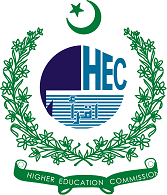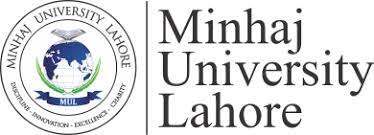Changing Dynamics of Great Power Relations in Central Asia: Prospects of Cooperation, Competition and Conflict
DOI:
https://doi.org/10.58932/MULA0026Keywords:
Geography, Troika Power Relations, Geopolitics, Neoclassical Realism, Competition, Central Asia, Russia, China, the US.Abstract
Geographical norms play a crucial role in state’s behavior and various behavioral patterns are caused including cooperation, competition, and conflict. Central Asia, a region with immense resource potential and values, has triggered competition among the great powers after Soviet’s dismemberment. This article assesses the evolving nature of ‘troika’ power interaction and clout in Central Asia, focusing primarily on Sino-Russian ties and their implications for the US in the theatre of Central Asia. This troika, as a novel prism for interpreting drivers in contemporary state-to-state interactions, demonstrates the dynamics of either cooperation or competition at both bilateral and multilateral levels. Within this triad, there are several “push-pull” factors that drive interactions in all domains, but the nature of interaction is determined by the country. This is a qualitative study which utilizes a neoclassical realist approach to argue that geographical, historical, and cultural factors along with Russia’s military presence in the region as a ‘security provider’ favor Russia over China in the short run while Chinese are best positioned to extend their influence in the long run in Central Asia. The US, on the other hand, seems to be losing in this geopolitical theatre of Central Asia.
References
Allison, Roy. (2008). Virtual Regionalism, Regional Structures and Regime Security in Central Asia. Central Asian Survey, 27(2), 185-202.
Cheriegate, K., (2020). A New Era of Strategic Partnership: The US Engages to Find Opportunities in Central Asia. Crossroad Asia. https://thediplomat.com/2020/02/a-new-era-of-strategic-partnership-the-us-engages-to-find-opportunities-in-central-asia/
Collins, Kathleen. (2009). Economic and Security Regionalism among Patrimonial Authoritarian Regimes: The Case of Central Asia. Europe-Asia Studies, 61(2), 249-281.
Cooley, Alexander. (2021). on the brink and at the world’s edge: Western approaches to Central Asia’s international politics, 1991-2021. Central Asian Survey, 1-21. DOI: 10.1080/02634937.2021.1974818
Cooley, Alexander. (2019). Ordering Eurasia: The Rise and Decline of Liberal Internationalism in the Post-Communist Space. Security Studies, DOI: 10.1080/09636412.2019.1604988
Cooley, Alexander. (2016). The Emerging Political Economy of OBOR: the Challenges of Promoting Connectivity in Central Asia and Beyond. Reconnecting Asia. Washington DC: CSIS, October 2016.
Cooley, Alexander. (2012). Great Games, Local Rules: Contest in Central Asia. Oxford: Oxford University Press.
Hafeznia, Mohammad Reza., (2006). Principles and Concepts of Geopolitics. Tehran: Amirkabir Press [in Persian].
Imam, M.A. et al. (2023) ‘Contextualizing research approaches: The role of Western and Islamic philosophies in shaping methodology and knowledge creation’, Al-Irfan, 8(16), pp. 69–90.
Karimi, Mehndi. (2015). Rivalry of global powers in Central Asia after the Cold War. Geopolitics Quarterly, 10(4), 122-148.
Kazantsev, Andrey. (2008). “Bolshie igra" s neizvestnymi pravilami: Mirovaia politika i Tsentral ' naia Aziia ["Great game" with unknown rules: World politics and Central Asia]. Moscow: MGIMO.
Lobell, Steven E., (2009). "Threat Assessment, the A Neoclassical Realist Model." In Steven E. and Jeffrey W. Taliaferro, eds., Neoclassical and Foreign Policy. Cambridge: Cambridge University Press.
Lobell, Steven E., Norrin M. Ripsman, and Jeffrey. W. Taliaferro., (2009). Neoclassical Realism, the State, and Foreign Policy. Cambridge: Cambridge University Press.
Menon, Rajan. (2003). the New Great Game in Central Asia. Survival, 45(2), 187-204.
Mirza, M.N., and S. Ayub., (2022). Heartland, Rimland, and the Grand Chessboard Deciphering the Great Power Politics in Central Asia. University of Wah Journal of Social Sciences, 5(1), 187–204. https://uwjss.org.pk/index.php/ojs3/article/view/55
Mouritzen, Hans. (2009). “Past versus Present Geopolitics: Cautiously Opening the Realist Door to the Past." In Annette Freyberg-Inan, Ewan Har-rison, and Patrick James, eds., Rethinking Realism in International Relations: Between Tradition and Innovation. Baltimore: Johns Hop-kins University Press.
Muhammadi, Iqbal, R., & Ali, H. (2023). Central Asia and the Great Power Politics: An Analysis of China’s National Interest in the Region and U.S. Approach to China. The Chinese Historical Review, 30(2), 228–240. https://doi.org/10.1080/1547402X.2023.2268883
Pirro, E.B. (2015). Great Power Foreign Relations in Central Asia: Competition, Cooperation and Congruence. In: Sussex, M., Kanet, R.E. (Eds) Russia, Eurasia and the New Geopolitics of Energy. Palgrave Macmillan, London. https://doi.org/10.1007/978-1-137-52373-0_6
Pogacian, Adrian., (2022). Great powers rivalry in Central Asia: new strategy, old game. Did the Kazakhstan crisis change the regional chessboard? Russian International Affairs Council.
Rose, Gideon., (1998). Neoclassical Realism and Theories of Foreign Policy. World Politics, 51(1), 141-172.
Sahakyan, M. (2023). The new great power competition in central asia: Opportunities and challenges for the gulf. SSRN Electronic Journal. https://doi.org/10.2139/ssrn.4338973
Waltz, Kenneth. (1979). Theory of International Politics. Reading, M.A: Addison-wesley.




